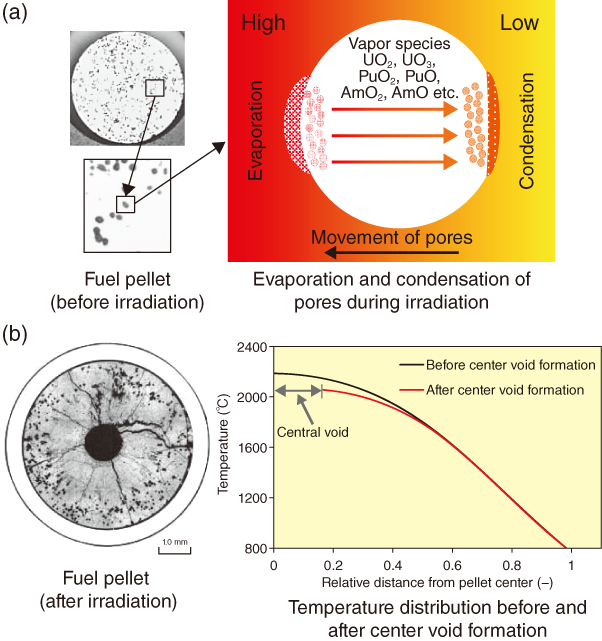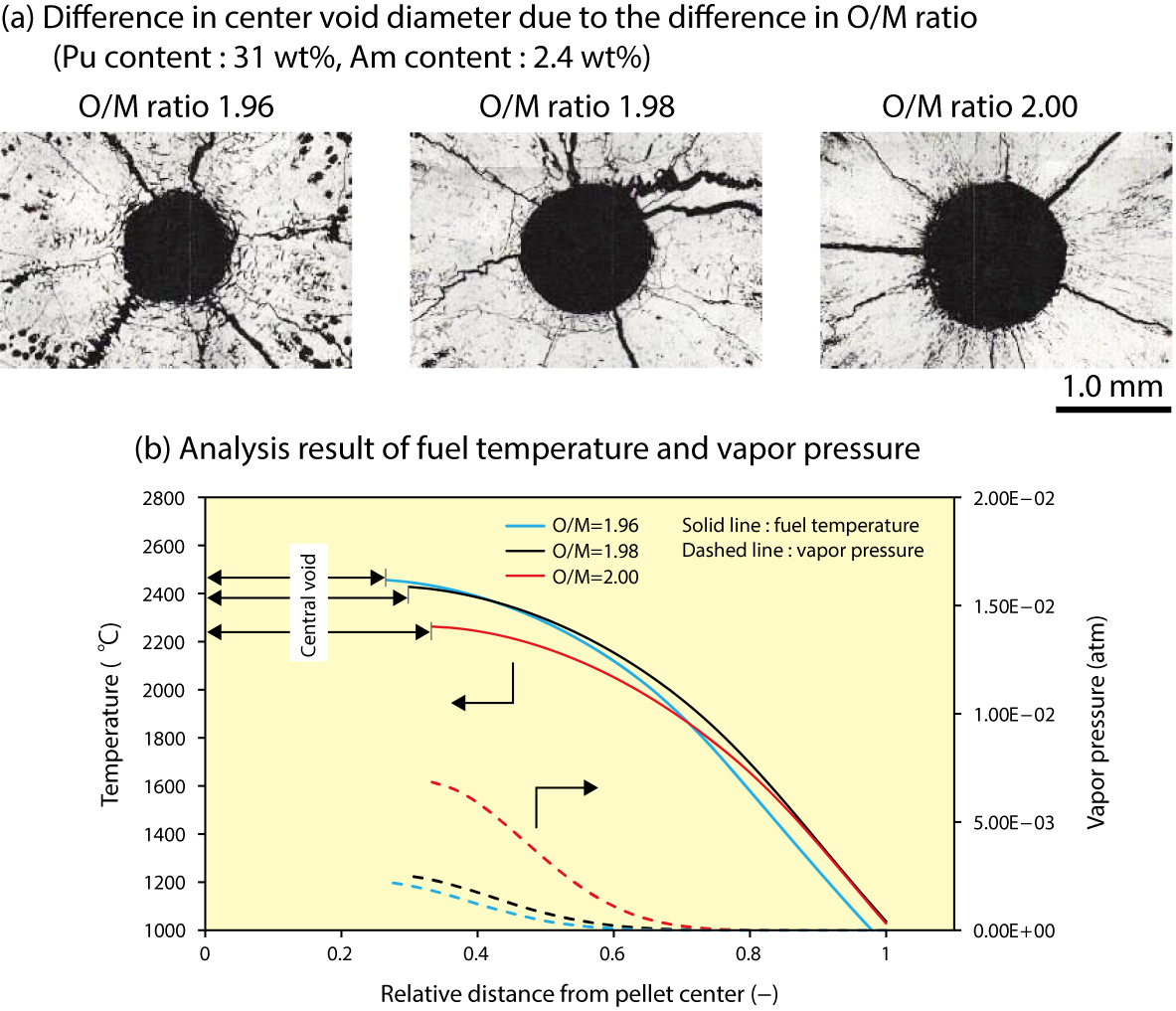
Fig.7-9 Mechanism of central-void formation

Fig.7-10 Difference in central-void diameter according to O/M ratio and analysis result
In order to ensure safety, fast-reactor fuel must be designed to prevent fuel melting. It is known that the oxide–metal (O/M) ratio of mixed–oxide fuel (MOX fuel) affects the thermal conductivity, melting point, and vapor pressure. Therefore, it is necessary to confirm the O/M ratio’s influence upon the irradiation behavior and to reflect this influence in the fuel design. In addition, research and development on minor actinides (MAs) bearing MOX fuel for the fast reactor has been proceeding from the viewpoint of reducing radioactive waste. In order to develop MA-bearing MOX, it is indispensable to clarify the influence of MA-addition upon irradiation behavior.
This study evaluated the influence of the O/M ratio upon the irradiation behavior based on the irradiation-test result of MA-MOX fuel.
Because the fuel-center temperature decreases with the formation of the central void, fuel restructuring is one of the most important behaviors from the viewpoint of evaluating the fuel’s thermal behavior. Fig.7-9 shows the mechanism of central-void formation. As shown in this figure, the existing pores in the as-fabricated MOX-fuel pellet move toward the fuel center by evaporation–condensation processes under a radial temperature gradient. This pore migration causes fuel restructuring. Vapor pressure is one of the most important physical properties for evaluating the fuel restructuring caused by this process.
Fig.7-10 shows the O/M-ratio dependence of the central-void diameter and fuel temperature. As shown in this figure, the central-void diameter of the O/M 2.00 sample was larger than that of samples with O/M 1.96 and 1.98. In order to evaluate the difference in the central-void diameter due to this O/M ratio, the relationship between this ratio and vapor pressure was evaluated based on the latest knowledge and a new pore-migration model was developed. Moreover, since MAs such as Am also influence the vapor pressure, MAs were also considered as vapor species in this improved model. The results of this evaluation are shown in Fig.7-10; the central-void diameter of the O/M 2.00 sample was larger than those of the O/M 1.96 and 1.98 samples. However, the fuel temperatures in the O/M 2.00 sample were evaluated to be lower than those in O/M 1.96 and 1.98. The reasons were as follows: the fuel temperature decreased due to the high thermal conductivity at stoichiometry, and the pore-migration velocity increased since the total vapor pressure was increased by the vapor pressure of UO3, whose increase was derived from the high oxygen potential at stoichiometry.
Thus, by considering the influence of the O/M ratio of the vapor pressure, it was possible to evaluate fuel restructuring. Moreover, since the irradiation test of MA-MOX fuel is small, developing a pore-migration model that considers MAs was a major achievement.